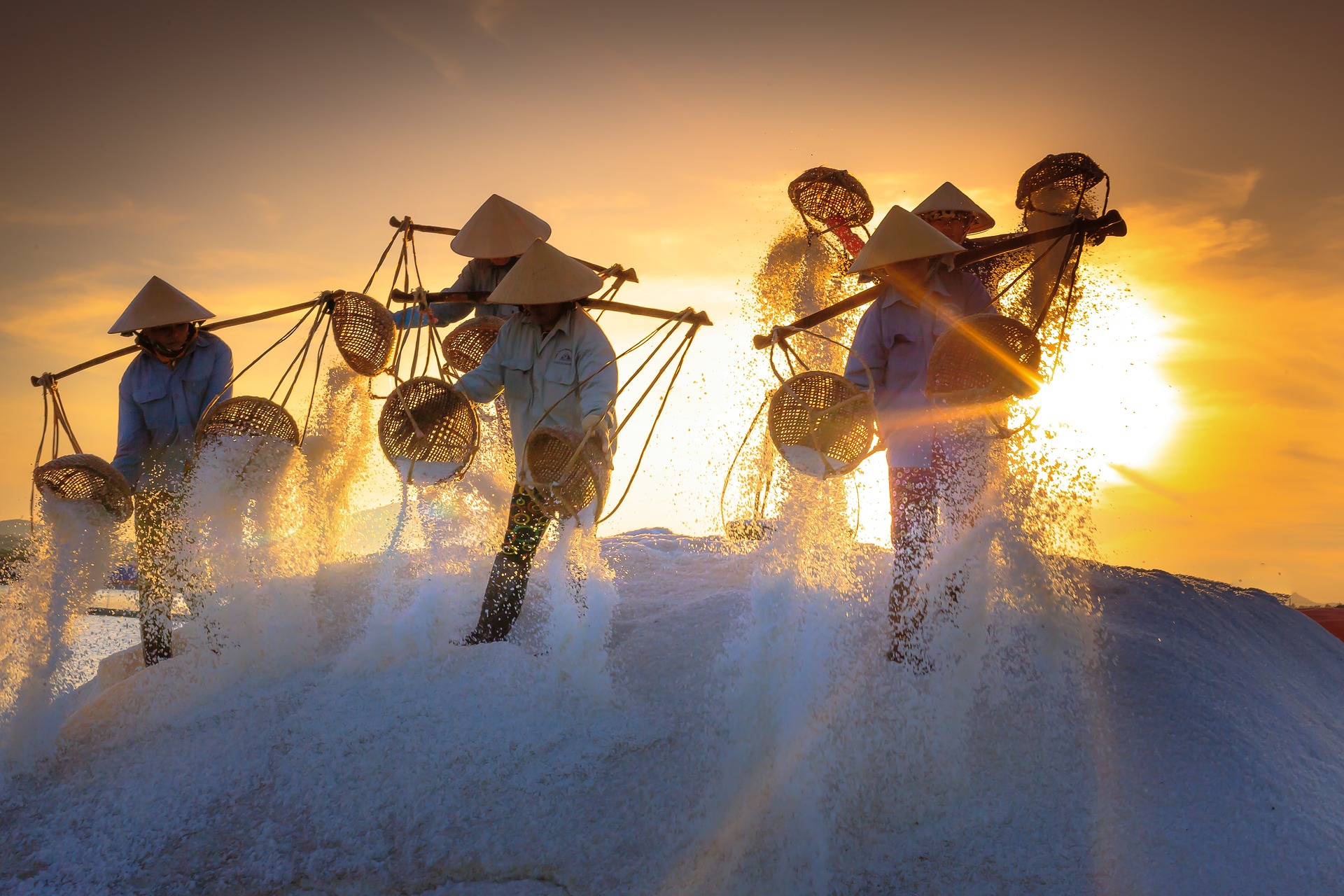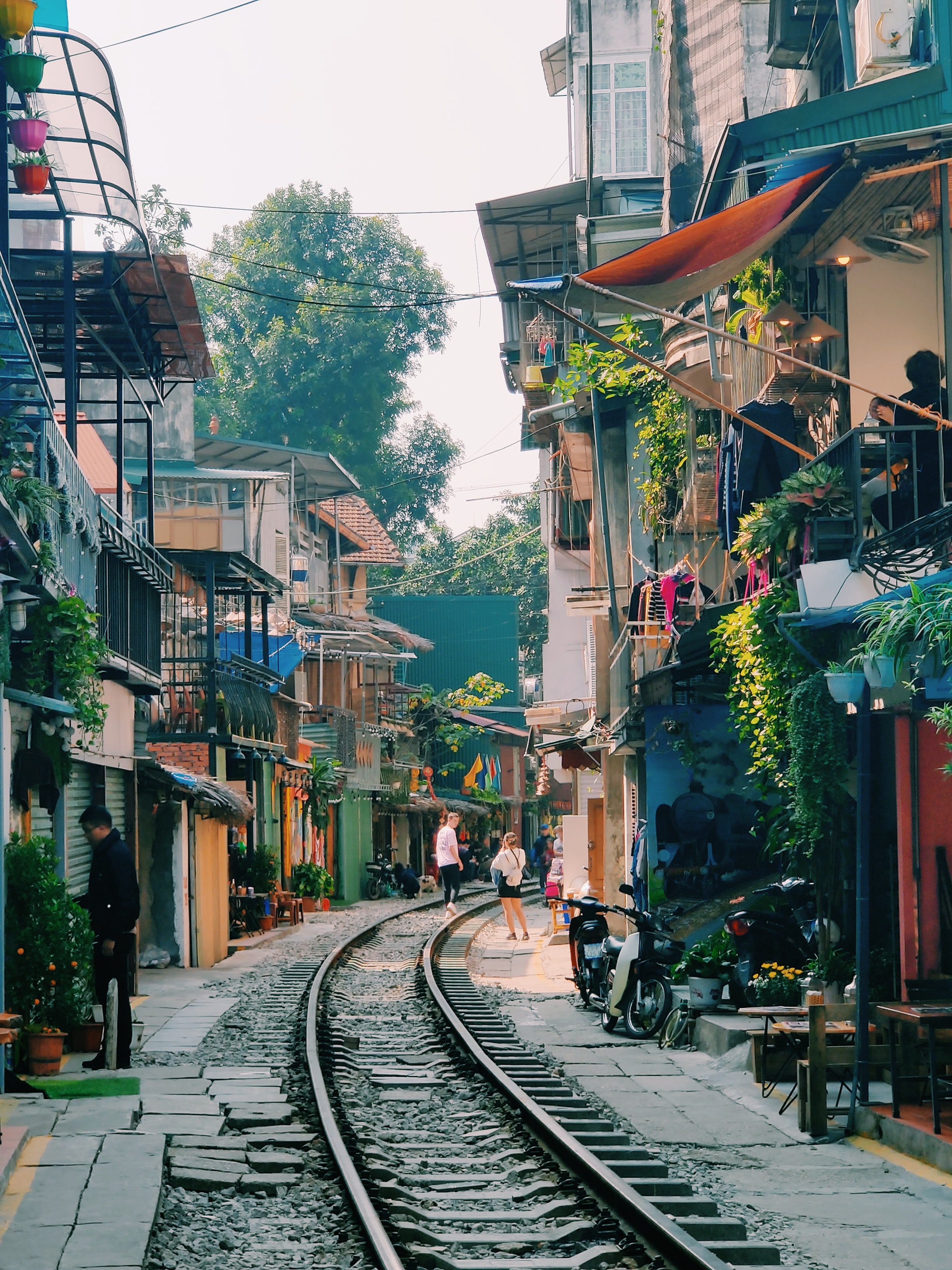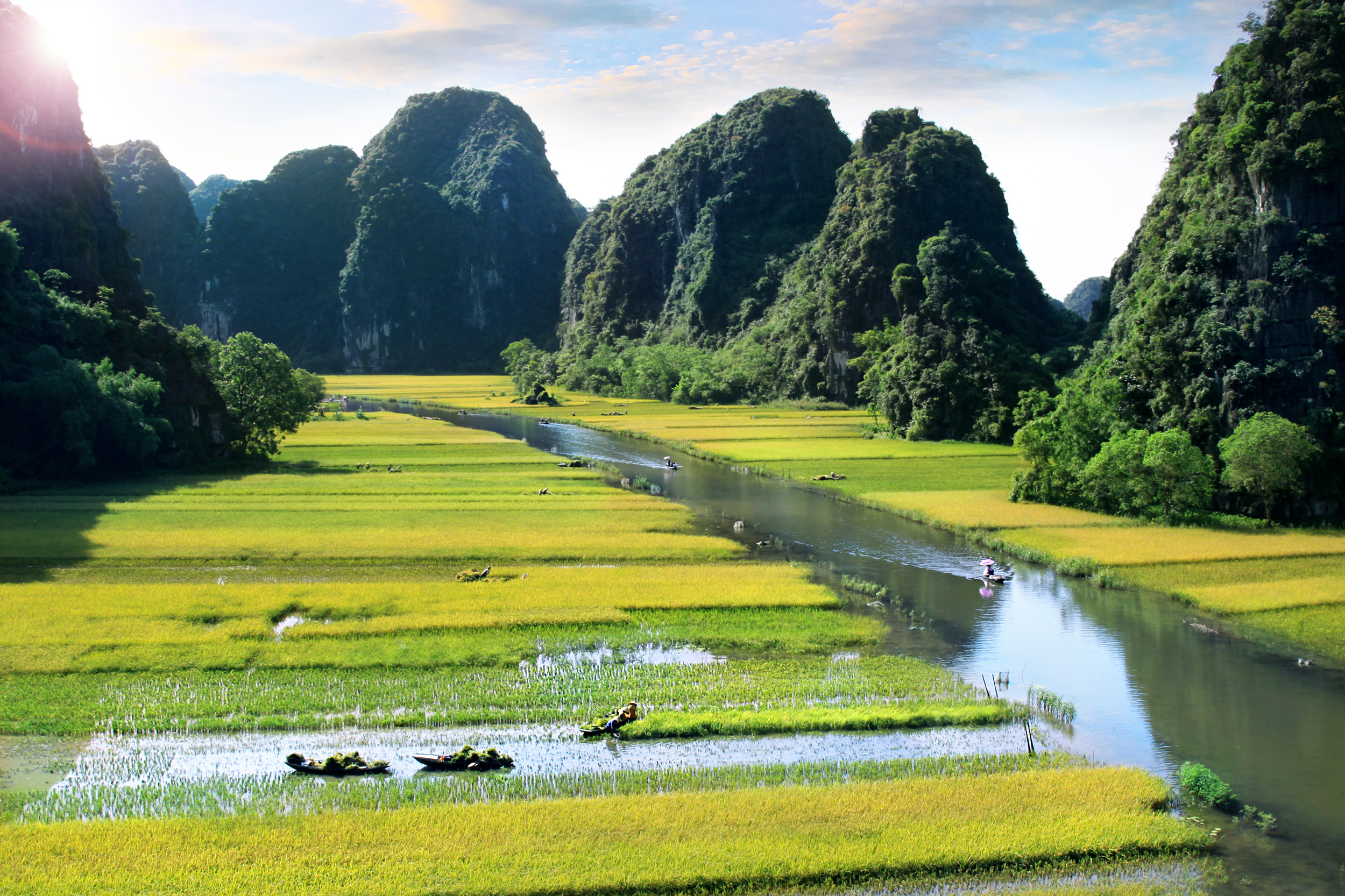
Our lowdown on Vietnam
Why visit Vietnam? This is what we love about the country.
Come expecting to find Vietnam beautiful but undeveloped and you’ll soon find your stereotypes exploded. Of course, it should come as no surprise there are skyscrapers in Ho Chi Minh City and luxury resorts on the beaches of Phu Quoc. But craft beer tasting tours? Augmented reality art installations? Tech start-ups wedged between noodle stalls, and minimalist coffee roasters alongside bike repair shops? This is no longer the developing world: modern Vietnam is a forward-looking, trend-conscious, dynamic player globally, with an entrepreneurial spirit and an indomitable drive to survive and thrive.

Vietnam’s transformation has been incredible. Before economic and political reforms in 1986, it was one of the world’s poorest countries, with a poverty rate over 70%. For decades its name was synonymous with war. All that has changed. Vietnam now has a poverty rate below 6%, and one of the fastest-growing economies in Asia. While the effects of the war indisputably live on, both in global politics and in the memories of those who survived it, to most young Vietnamese it feels like ancient history. War sites are preserved and respected, but the events they commemorate are presented with nuance and even-handedness rather than bitterness and vitriol. Hostility towards the West is rare.
When you think about it, it’s hardly surprising that the people who fought and won two long, bitter wars against all odds have managed to turn that hard-bitten determination to lifting their country out of poverty. If the Vietnamese have anything in their national character, it’s grit.

So, what should you expect from Vietnam today? What is it about this country that made Graham Greene fall in love, and changed Anthony Bourdain’s life?
It starts with an atmosphere. If you’ve travelled in Southeast Asia before, you know it. That humid, tropical heat that hits you as soon as you step off the plane, and soon becomes layered with the smell of fish sauce, the shouts of vendors, the sizzling of pancakes, and the background cacophony of scooter engines and car horns. It’s an atmosphere in which it’s impossible to separate sounds from smells, smells from tastes, tastes from sensations. You know instantly that you’re in a different world — somewhere new and exotic.

Most people begin their journey in Hanoi or Ho Chi Minh City (AKA Saigon), Vietnam’s two biggest cities. One northern, the other southern; one stiff-backed and traditional, the other dynamic and international; one ringed by high mountains, the other on the fringes of the tropical Mekong Delta. These former enemies are now close rivals, matching one another point-for-point when it comes to historic monuments, cultural experiences, and (most importantly) delicious food.
Whether you start in the north or the south, the chances are that one of the first things that’ll strike you is the sheer volume of people. Vietnam is one of the most densely populated countries in the world, and at times it can feel like all 95 million of its inhabitants are riding scooters down the same street in Saigon. It’s overwhelming. While you spend ten minutes plucking up the courage to cross the road, old ladies with baskets hanging from bamboo poles weave fearlessly through swarms of tuk-tuks and smartphone-wielding pedestrians, seemingly invincible through sheer force of will. By evening, all these people are crowded around low tables, shoulder to shoulder on little plastic stools, sipping cold beers over steaming dishes loaded with fresh seafood and char-grilled, marinated meats, while live music drifts out of bars and delicious-smelling steam billows into the night.

If you haven’t noticed already, you’ll soon find out that any conversation about Vietnam soon turns to food.

Thailand’s may be the best-known of Southeast Asian cuisines, but a large and vocal portion of the foodie firmament will tell you that Vietnam’s is the most delicious. In fact, the standard Vietnamese greeting isn’t “how are you”, but “have you eaten yet?” (“ăn cơm chưa?”) — which should give you an idea of the centrality of food in Vietnamese culture.
Vietnamese cuisine is fresh and fragrant, cooked quickly, and loaded with pungent fish sauce, shrimp paste, zingy chilli, and aromatic flavours like lemongrass, ginger, lime and basil. Every region of the country has its own local delicacies, and you could fill a whole holiday with all the organic farms, cooking classes, street-food tours and trendy fusion cuisine on offer. Slurping a bowl of pho noodle soup for breakfast and then watching the world go by over a ca phe sua da (iced coffee with condensed milk) is a rite of passage that every visitor should honour, and you may find even years later that a whiff of fish sauce is all you need to be transported back to your favourite backstreet café in Hanoi. (Beware: Vietnam is a nation with fish sauce in its veins, so if you’re vegetarian you’d better like spring rolls.)

Inextricably tied to Vietnam’s food culture is its geography.
Vietnam covers a huge array of different topographies and climates, and each region has its own speciality crops. Banana and coconut in the Mekong Delta, black pepper and fish sauce on Phu Quoc, coffee and tea in the central highlands, and fresh seafood all along the country’s 3,444 kilometres of coast — and that’s just for starters. This means that wherever you go, there’s a whole new menu of dishes just waiting to be sampled, and each region will insist that theirs is the best.

Culinary variety isn’t the only benefit of Vietnam’s peculiar geography. Encompassing everything from lush lowland and tropical, palm-fringed beaches to mountain plateaus and densely forested highlands, the sheer variety of scenery means a visit to Vietnam can feel like several countries in one.
In the north, where the Annamite Mountains reach down from Tibet and Yunnan, hilltribes of the Hmong, Dao, Thai and other ethnic minorities live in remote communities where the past few centuries feel like they never happened. In central Vietnam, meanwhile, history is impossible to ignore — whether it’s the imperial Citadel of Vietnam’s last royal dynasty, the ancient Hindu ruins of the Champa Kingdom, or the 15th-century port of Hoi An, once one of the most important in Asia.
In the jungles of Phong Nha, there’s one of the world’s most exciting caving destinations. In the south, there are the stilt villages and floating markets on the Mekong Delta. On the beaches and islands, there are white sands, azure seas, and beachside bars. All this without even mentioning Hanoi and Ho Chi Minh City, the country’s twin cities, with their contemporary art, world-class nightlife, colonial heritage and wartime monuments.

Why do we love Vietnam so much?

There aren’t many places in the world where you can do and see all this without ever leaving the country — and even fewer where you can do it all with fantastic hotels, well-oiled transfers, and superb tours in every destination.
But in the end, that’s still not what makes Vietnam so special. What makes it special, ultimately, are its people. Not just the swarms of commuters you’ll share your morning coffee with in backstreet cafés, or the chance-met stranger who helps you find your way to your hotel. It’s the generous, funny and impressively knowledgeable guides who bring our wonderful tours to life. It’s the people in rural villages who welcome you into their homes, and won’t let you leave without a cup of tea and a snack. It’s the talented chef who reveals the secrets of Vietnamese cooking, the fearless scooter driver who whisks you through the streets, and the expat who can’t wait to share their love of their adopted home.
It’s anyone who takes the time to tell their story and share a little bit of their life with you — and you won’t find that hard to find in Vietnam.
